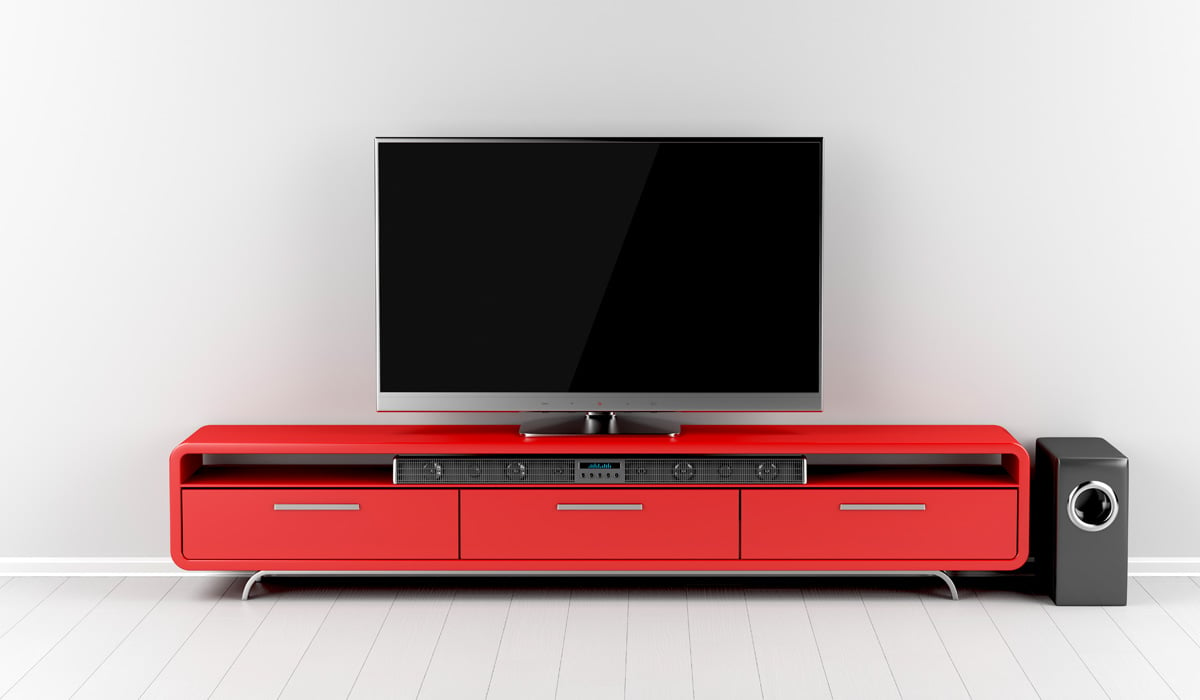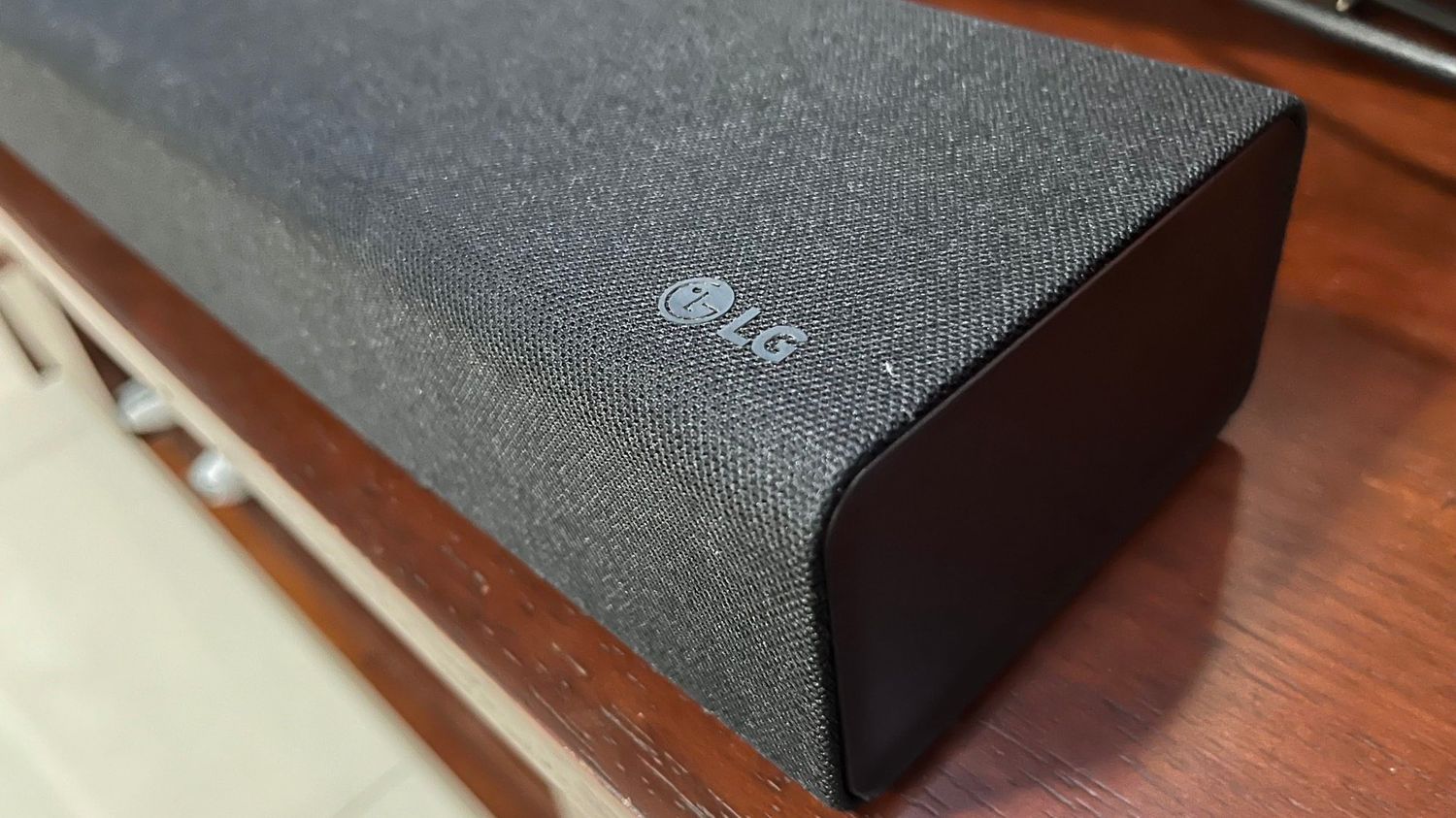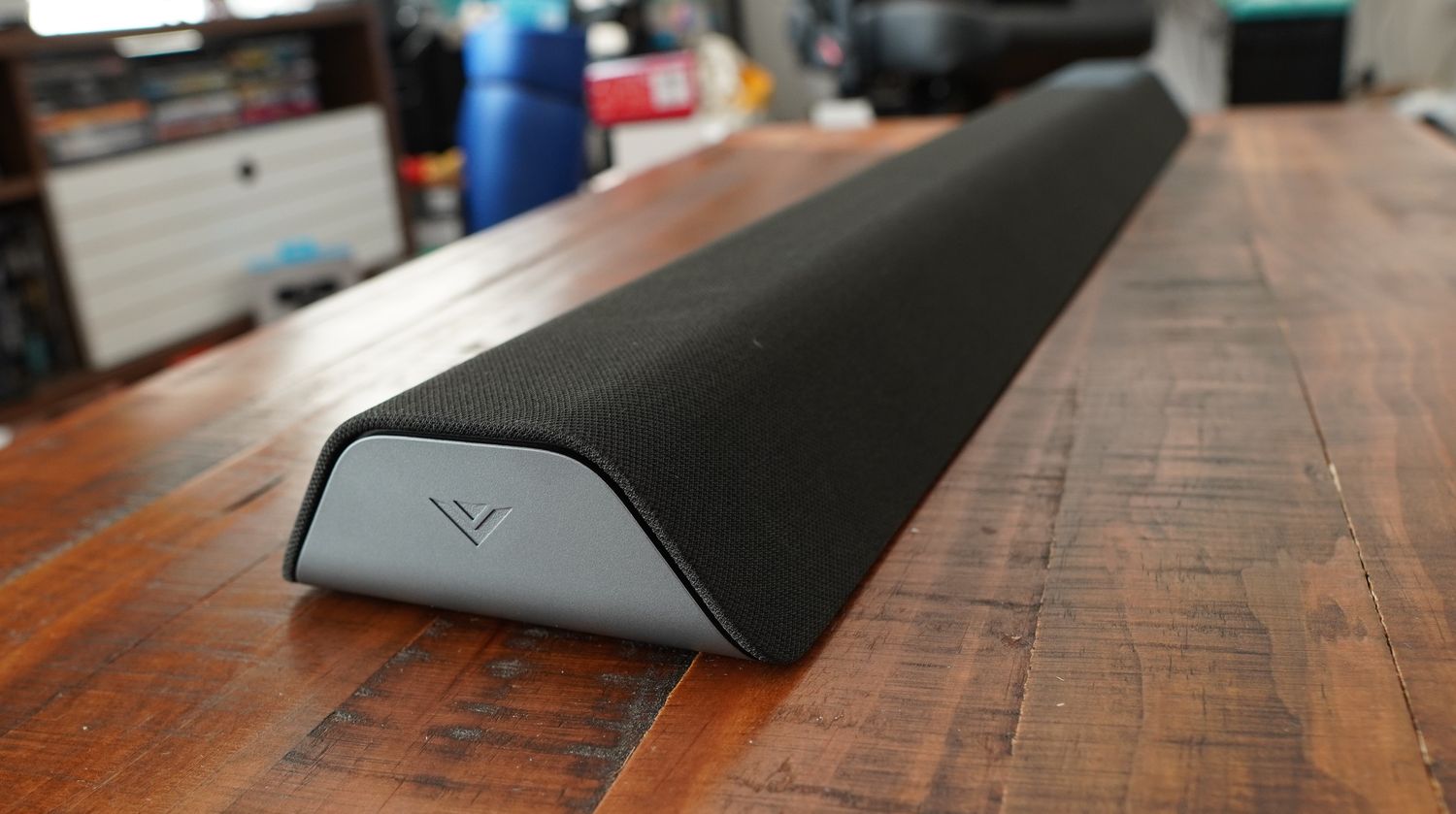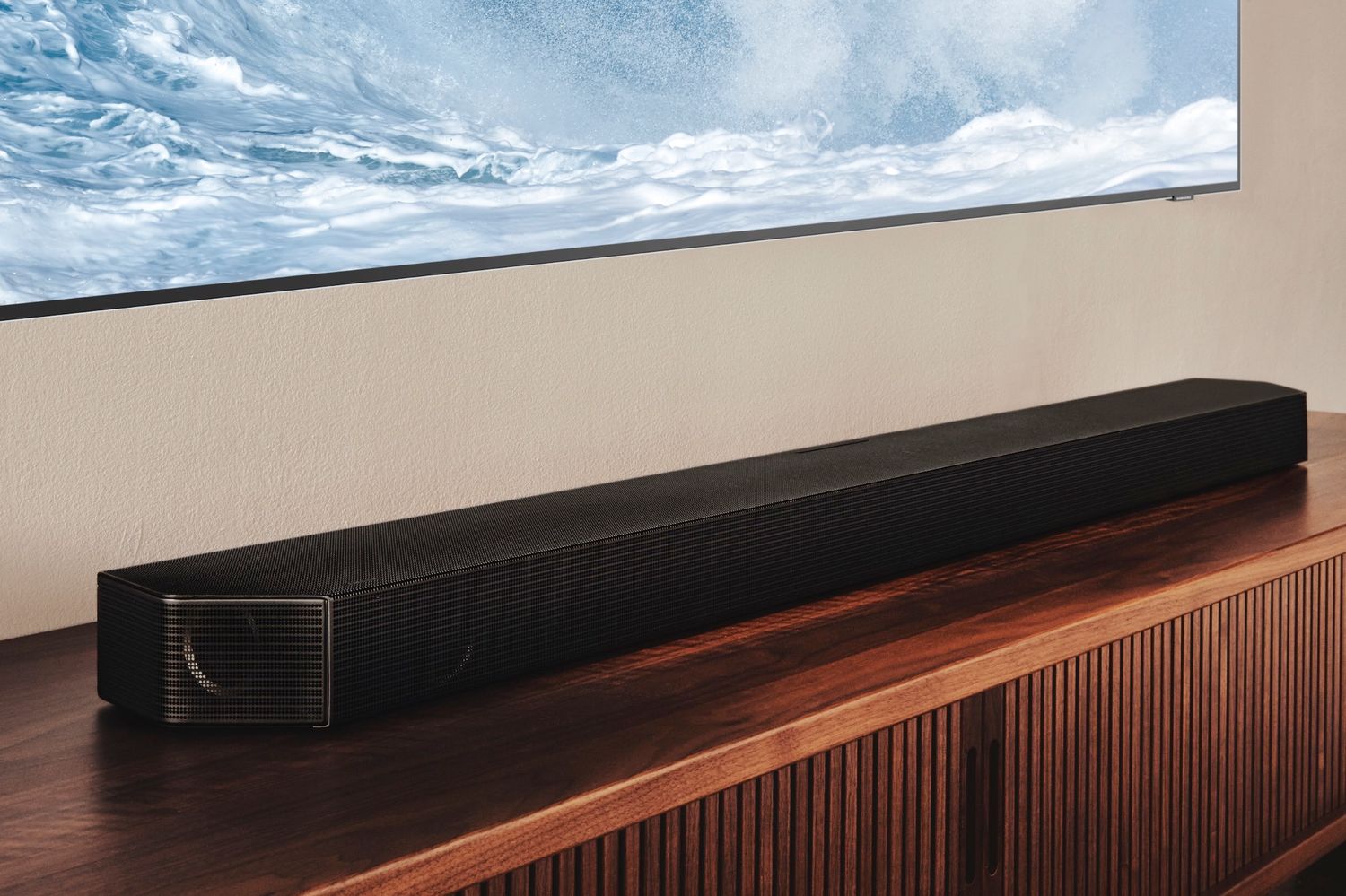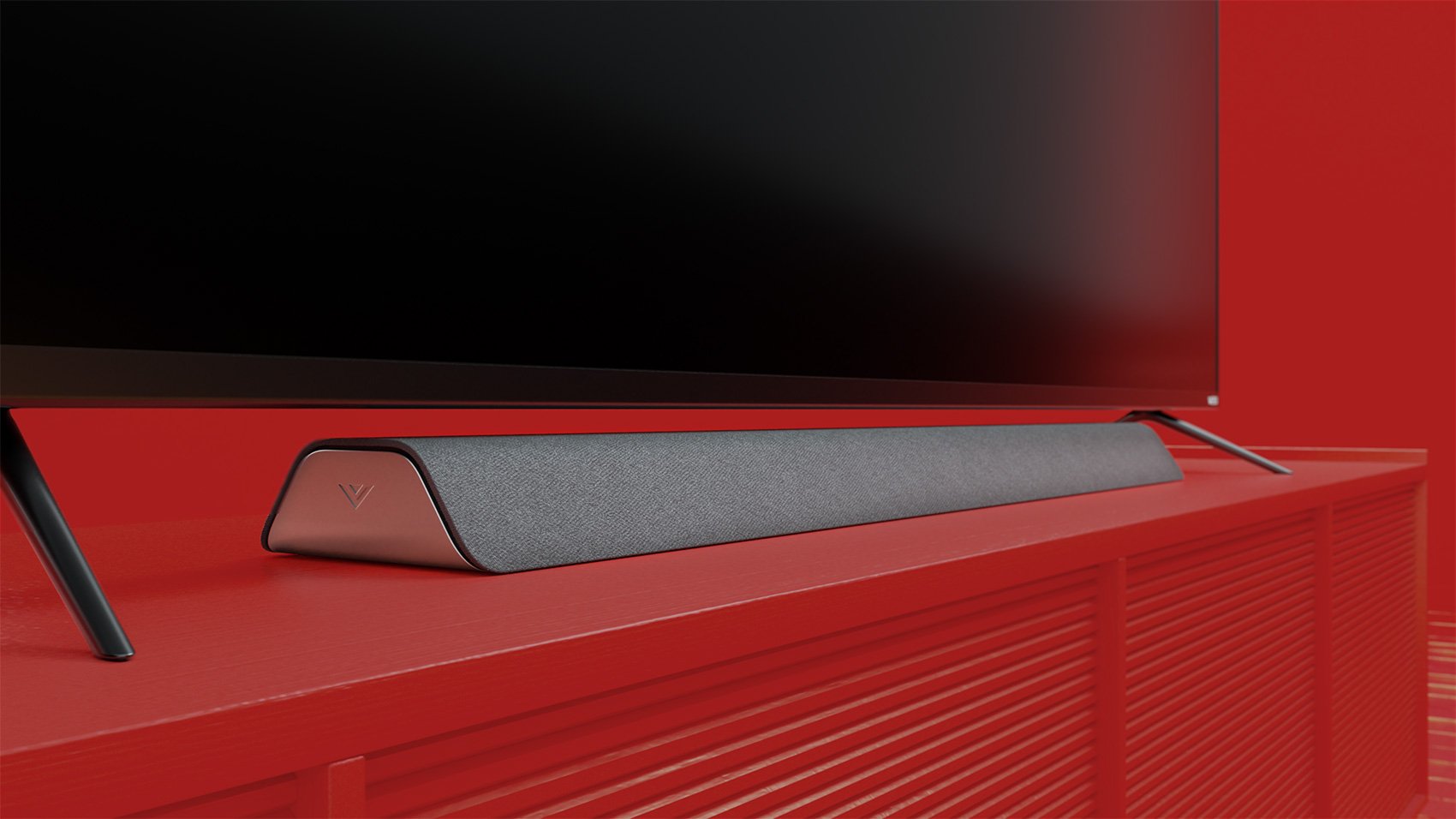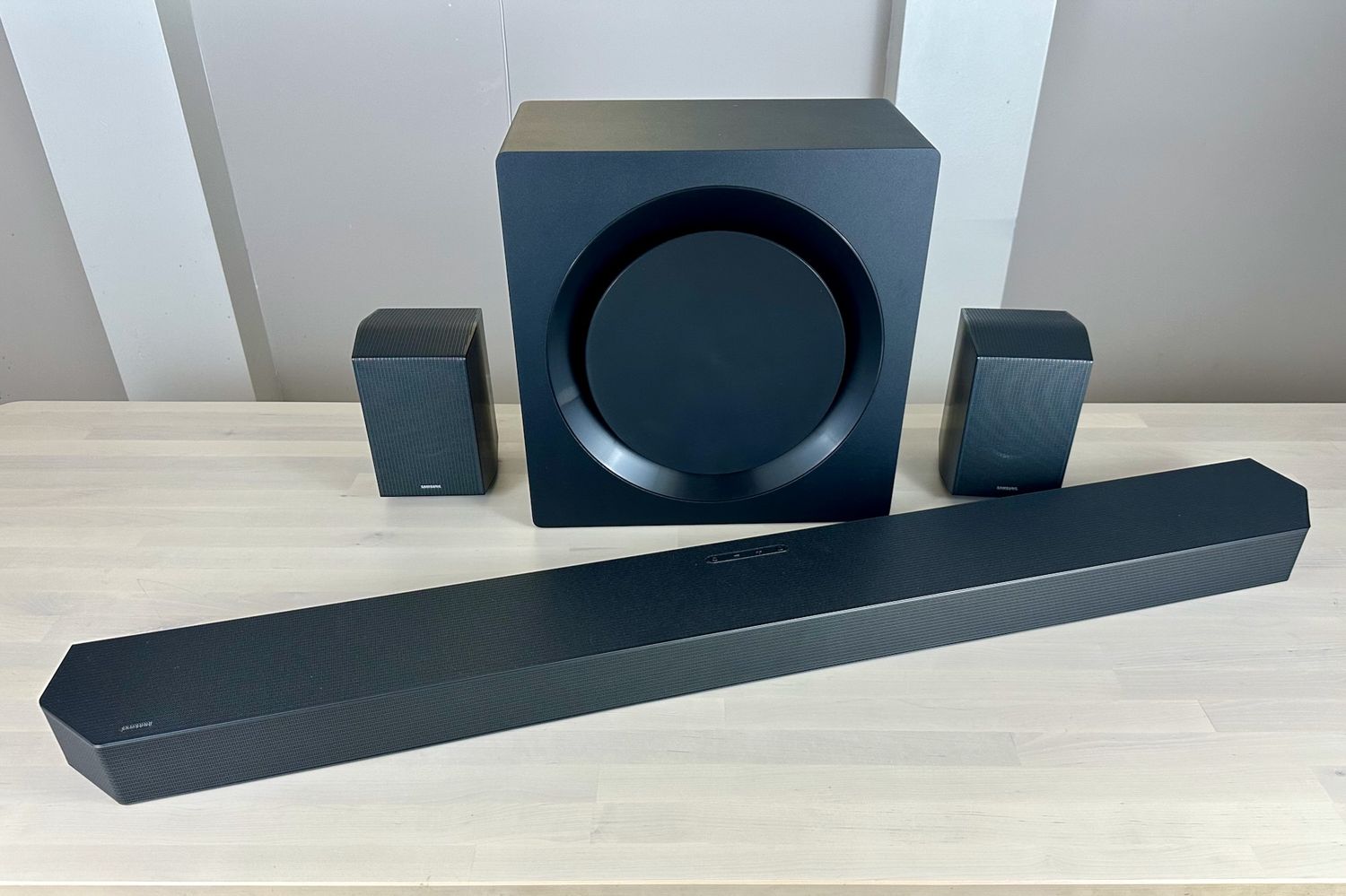Home>Production & Technology>Sound Bar>Why Is My Sound Bar Echoing


Sound Bar
Why Is My Sound Bar Echoing
Modified: January 22, 2024
Experiencing an echoing sound from your sound bar? Discover the reasons behind this audio issue and how to fix it with our expert tips.
(Many of the links in this article redirect to a specific reviewed product. Your purchase of these products through affiliate links helps to generate commission for AudioLover.com, at no extra cost. Learn more)
Table of Contents
- Introduction
- Understanding Sound Bar Echoes
- Causes of Sound Bar Echoes
- Room Acoustics
- Placement of Sound Bar
- Audio Settings
- Connectivity Issues
- Hardware Problems
- Troubleshooting Sound Bar Echoes
- Adjusting Room Acoustics
- Repositioning the Sound Bar
- Tweaking Audio Settings
- Checking Connectivity
- Resolving Hardware Issues
- Conclusion
Introduction
Welcome to the world of sound bars, the perfect solution to upgrade your TV’s audio quality and give you an immersive entertainment experience right in the comfort of your own home. However, as with any audio equipment, sound bars can sometimes encounter issues, one of which is echoing. If you’ve ever wondered, “Why is my sound bar echoing?”, you’re not alone.
Sound bar echoes occur when you hear a delayed repetition of sound, as if it’s bouncing off the walls of your room. This can significantly diminish the clarity and impact of the audio, making it frustrating to enjoy your favorite movies, TV shows, or music.
In this article, we’ll take a closer look at the reasons behind sound bar echoes and provide you with troubleshooting tips to help you resolve the issue. By understanding the causes and implementing the recommended solutions, you can ensure optimal sound quality and eliminate those annoying echoes once and for all.
Understanding Sound Bar Echoes
Before delving into the causes and solutions of sound bar echoes, it’s important to have a basic understanding of how they occur. Echoes are essentially the result of sound waves bouncing off surfaces in your room and reaching your ears at different times. This delayed repetition creates a distorted and muddled audio experience, detracting from the overall quality.
Sound bar echoes can manifest in different forms, such as a slight reverb or a more pronounced and noticeable echo. The severity of the echo can vary depending on various factors, including the acoustics of your room, placement of the sound bar, audio settings, and even connectivity issues.
It’s worth mentioning that not all sound bar echoes are the same. Sometimes, the echo is caused by the sound bar itself, while in other cases, it may be attributed to external factors, such as the room environment. Understanding the specific causes of sound bar echoes will help you address the issue more effectively.
Now, let’s explore some of the common reasons behind sound bar echoes, so you can identify the potential culprits and take the necessary steps to resolve them.
Causes of Sound Bar Echoes
Sound bar echoes can stem from various factors, ranging from room acoustics to hardware problems. Identifying the specific cause of the echoing is crucial to finding an appropriate solution. Here are some common causes to consider:
- Room Acoustics: The acoustics of your room play a significant role in sound propagation. Hard and reflective surfaces, such as bare walls, floors, or ceilings, can cause sound waves to bounce back and create echoes. Similarly, an overly spacious or open room can result in sound dispersion, causing echoes.
- Placement of Sound Bar: The location of your sound bar can affect the audio quality. Placing the sound bar too close to the walls or corners of the room can lead to echoes due to sound reflections. Additionally, if the sound bar is placed too high or too low, it may disrupt the sound trajectory and result in echoes.
- Audio Settings: Incorrect audio settings on your sound bar or connected devices can contribute to echoing issues. For example, if the sound bar’s audio delay settings are not properly calibrated, it can cause a mismatch in sound synchronization and create echoes. Likewise, using audio effects or modes that are not suitable for the content being played can also cause echoes.
- Connectivity Issues: Problems with the audio input or output connections can lead to sound bar echoes. Loose cables, faulty connections, or incompatible audio formats can disrupt the transmission of sound signals and result in echoes or distortions.
- Hardware Problems: In some cases, sound bar echoes may be caused by hardware malfunctions. This can include issues with the speakers, amplifiers, or other internal components of the sound bar. If the echoes persist across different audio sources and settings, it might indicate a hardware problem that requires professional repair or replacement.
It’s important to note that these causes are not exhaustive, and there may be other factors contributing to sound bar echoes. However, understanding these common causes will help you narrow down the possibilities and take the appropriate steps to troubleshoot the issue.
Room Acoustics
The acoustics of your room have a significant impact on the sound quality produced by your sound bar. Hard and reflective surfaces, such as bare walls, floors, and ceilings, can cause sound waves to bounce off and create echoes. Additionally, an overly spacious or open room can lead to sound dispersion, resulting in echoes.
To address sound bar echoes caused by room acoustics, consider the following solutions:
- Add Soft Surfaces: Incorporate soft materials into your room to reduce sound reflections. Place curtains, rugs, or acoustic panels on bare walls and floors to absorb the sound waves and minimize echoes.
- Use Furniture and Decor: Furniture and home decor items can help break up sound reflections and improve acoustics. Bookshelves, sofas, cushions, and wall hangings can act as sound absorbers and reduce the impact of echoes.
- Consider Room Dividers: If your room is excessively spacious or open, consider using room dividers or partitions to create smaller areas. This can help minimize sound dispersion and prevent echoes from bouncing around the entire space.
- Apply Acoustic Treatment: For more severe acoustic issues, consider applying specialized acoustic treatment to your room. This can involve installing acoustic panels, diffusers, or bass traps to optimize sound absorption and minimize echoes.
Experimenting with different room arrangements and acoustical adjustments can help you find the optimal setup to reduce sound bar echoes caused by room acoustics. Remember, every room is unique, so it may take some trial and error to achieve the desired results.
Placement of Sound Bar
The placement of your sound bar is crucial in achieving optimal sound quality and minimizing echoes. Incorrect placement, such as positioning the sound bar too close to walls or corners, can cause sound waves to reflect and create echoes. Similarly, placing the sound bar too high or too low can disrupt the sound trajectory and result in echoes.
To address sound bar echoes caused by improper placement, consider the following solutions:
- Center Position: Ideally, place your sound bar in the center of your TV or entertainment setup. This ensures that the sound is evenly distributed and reduces the chances of echoes caused by uneven waves.
- Away from Walls: Position the sound bar away from walls, corners, and other reflective surfaces. By providing ample space between the sound bar and the surroundings, you can minimize sound reflections and prevent echoes.
- Elevated Placement: Mounting the sound bar on a wall or placing it on a shelf at ear level can help improve audio clarity and reduce echoes. This ensures that the sound directly reaches the listeners without obstructions or unnecessary reflections.
- Avoid Potential Obstacles: Make sure the sound bar is not blocked by any objects, such as furniture or decor items. Obstacles in the sound path can disrupt the audio propagation and lead to echoes.
Experimenting with different placements and adjusting the position of your sound bar can significantly impact the sound quality and reduce echoing issues. Take some time to find the optimal placement that works best for your room and enhances your overall listening experience.
Audio Settings
Incorrect audio settings on your sound bar or connected devices can contribute to sound bar echoes. Mismatched audio delay settings, improper audio effects, or the use of unsuitable modes can all lead to echoing issues. It’s important to ensure that your audio settings are properly configured to avoid unwanted echoes.
To address sound bar echoes caused by audio settings, consider the following solutions:
- Audio Delay Calibration: Check the audio delay settings on your sound bar or the connected devices, such as your TV or media player. If there is a delay between the audio and video, adjusting the audio delay can help synchronize the sound and eliminate echoes.
- Disable Audio Effects: If you’re experiencing echoes while using audio effects or modes, try disabling them and listen to the audio in its original format. Some modes, like surround sound or virtual 3D audio, may create echoes due to the way they process the audio signal.
- Adjust Equalizer Settings: Experiment with the equalizer settings on your sound bar to find the right balance for your room and audio content. Excessive bass or treble levels can contribute to echoes, so tweaking the equalizer settings can help minimize them.
- Ensure Source Compatibility: Check if the audio source you’re playing is compatible with your sound bar. Some formats or bitrates may cause echoes or distortions. Ensure that the audio source is supported by your sound bar and adjust the settings accordingly.
By carefully adjusting and optimizing your audio settings, you can enhance the sound quality and reduce echoes. Take the time to experiment with different settings and find the ideal configuration that suits your preferences and eliminates unwanted echoes.
Connectivity Issues
Connectivity issues can also contribute to sound bar echoes. Problems with the audio input or output connections can result in distorted sound and echoes. Loose cables, faulty connections, or incompatible audio formats are some of the common culprits behind sound bar echoing.
To address sound bar echoes caused by connectivity issues, consider the following solutions:
- Check Audio Cables: Ensure that all audio cables, such as HDMI or optical cables, are securely connected to both the sound bar and the source device. A loose or faulty cable connection can lead to signal disruptions and echoes.
- Use High-Quality Cables: Low-quality or damaged cables can interfere with the audio signal and introduce echoes. Replace any worn-out or subpar cables with high-quality ones to ensure a stable and reliable connection.
- Verify Audio Format: Check if the audio format of your source device is compatible with your sound bar. Incompatible audio formats can result in distorted sound and echoes. Adjust the audio output settings of your source device to match the specifications of your sound bar.
- Update Firmware: Check if there are any firmware updates available for your sound bar. Outdated firmware can cause compatibility issues and potentially contribute to sound bar echoes. Consult the user manual or the manufacturer’s website for instructions on how to update the firmware.
By ensuring proper connectivity and compatibility, you can minimize the chances of experiencing sound bar echoes. Pay attention to the quality and integrity of your audio cables, always verify the audio format, and keep your sound bar firmware up to date to maintain a smooth and echo-free audio experience.
Hardware Problems
In some cases, sound bar echoes may be caused by hardware problems. Issues with the speakers, amplifiers, or other internal components of the sound bar can result in distorted sound and echoing. If the echoes persist across different audio sources and settings, it might indicate a hardware problem that requires professional repair or replacement.
To address sound bar echoes caused by hardware problems, consider the following steps:
- Inspect the Sound Bar: Carefully examine the sound bar for any visible damage or signs of malfunction. Check if the speakers are intact and if any components appear loose or out of place.
- Reset the Sound Bar: Try performing a factory reset on your sound bar. This can help to reset any settings that might be causing the echoes and restore the device to its default configuration.
- Contact the Manufacturer or a Professional: If the sound bar echoes persist even after troubleshooting the other possible causes, it may indicate a hardware problem. Contact the manufacturer’s customer support or consult with a professional technician for further assistance and potential repair or replacement options.
Keep in mind that hardware problems are less common compared to other causes of sound bar echoes. However, if you’ve exhausted all other troubleshooting options and the echoes persist, it’s advisable to seek expert help to diagnose and resolve any potential hardware-related issues.
Troubleshooting Sound Bar Echoes
Dealing with sound bar echoes can be frustrating, but there are several troubleshooting steps you can take to address the issue. By systematically identifying and addressing potential causes, you can effectively minimize or eliminate sound bar echoes. Here are some general troubleshooting tips to help you get started:
- Adjusting Room Acoustics: Modify the acoustics of your room by adding soft surfaces, using furniture and decor items to break up sound reflections, or applying specialized acoustic treatment.
- Repositioning the Sound Bar: Ensure the sound bar is placed in the center of your TV or entertainment setup and away from walls, corners, and potential obstructions.
- Tweaking Audio Settings: Check and adjust the audio delay settings, disable audio effects if causing echoes, and experiment with equalizer settings to find the optimal configuration.
- Checking Connectivity: Verify the cables are securely connected, use high-quality cables, confirm audio format compatibility, and update the sound bar firmware if necessary.
- Resolving Hardware Issues: Inspect the sound bar for any visible damage, perform a factory reset, and seek assistance from the manufacturer or professional technician if hardware problems are suspected.
It’s important to note that sound bar echoes may have multiple contributing factors. Therefore, it may require a combination of troubleshooting steps to effectively address the issue. Additionally, it may take some time and experimentation to find the perfect solution for your specific setup and room environment.
Remember to approach troubleshooting with patience and always refer to the user manual or seek professional assistance when needed. By systematically eliminating potential causes and implementing the appropriate solutions, you can enjoy your sound bar with crystal-clear audio and minimal or no echoes.
Adjusting Room Acoustics
When it comes to addressing sound bar echoes, one of the key factors to consider is the acoustics of your room. The surfaces and layout of your space can greatly impact how sound waves propagate and interact, leading to echoes. Fortunately, there are several adjustments you can make to improve the acoustics and minimize echoes in your room.
Here are some strategies for adjusting room acoustics:
- Add Soft Surfaces: Incorporate soft materials into your room to reduce sound reflections. Placing curtains, rugs, or acoustic panels on bare walls and floors can help absorb sound waves and minimize the occurrence of echoes. Additionally, adding plush furniture or cushions can also contribute to sound absorption.
- Use Furniture and Decor: Strategically placing furniture and decor items in your room can help break up sound reflections and improve acoustics. Bookshelves, sofas, cushions, and wall hangings can act as sound absorbers and reduce the impact of echoes. Rearranging furniture to create a layout that disperses sound waves more evenly can also be beneficial.
- Consider Room Dividers: If your room is excessively spacious or open, consider using room dividers or partitions to create smaller areas. This can help minimize sound dispersion and prevent echoes from bouncing around the entire space. Portable dividers or screens can be used to create dedicated listening areas and improve sound quality.
- Apply Acoustic Treatment: For more severe acoustic issues, you may want to consider applying specialized acoustic treatment. This can involve installing acoustic panels, diffusers, or bass traps on walls or ceilings. These treatments help optimize sound absorption and diffusion, minimizing the presence of echoes in the room. Consulting with an acoustic professional can help determine the best treatment options for your specific room.
Remember that the effectiveness of these adjustments may vary depending on the size and shape of your room. Experimentation and fine-tuning may be required to achieve the desired results. Additionally, it’s worth noting that while improving room acoustics can significantly reduce echoes, it may not completely eliminate them. Other factors such as sound bar placement and audio settings will also play a role in achieving optimal sound quality.
By taking steps to adjust the room acoustics, you can create a more balanced and pleasant listening environment, minimizing the impact of sound bar echoes and enhancing the overall audio experience.
Repositioning the Sound Bar
The placement of your sound bar has a significant impact on its performance and the occurrence of sound bar echoes. Incorrect positioning can cause sound waves to bounce off walls and surfaces, resulting in echoes and degraded audio quality. By repositioning your sound bar, you can improve sound propagation and minimize the presence of echoes in your room.
Consider the following tips for repositioning your sound bar:
- Center Placement: Position your sound bar in the center of your TV or entertainment setup. This allows for more even sound distribution and helps reduce the chances of uneven sound waves causing echoes.
- Away from Walls and Corners: Avoid placing the sound bar too close to walls, corners, or other reflective surfaces. The closer the sound bar is to these surfaces, the more likely sound waves will reflect and create echoes. Aim to keep a reasonable distance between the sound bar and the walls to minimize the impact of reflections.
- Elevated Position: Mounting the sound bar on a wall or placing it on a shelf at ear level can help optimize sound projection and minimize echoes. When the sound bar is positioned at ear level, the audio is more direct and reduces the risk of sound waves bouncing off objects or surfaces.
- Consider Sound Bar Stands: If mounting the sound bar on a wall is not an option, consider using a sound bar stand. A stand allows you to position the sound bar at the optimal height and distance from walls and other objects, thus minimizing the chances of sound reflections causing echoes.
- Experiment with Placement: Every room is unique, and the ideal sound bar placement may vary. Experiment with different positions and angles to find the one that produces the best sound quality with the least amount of echoes. Pay attention to how the sound interacts with the room and make adjustments accordingly.
By repositioning your sound bar strategically, you can create a better sound stage and reduce the occurrence of echoes. Remember to take into account the layout and characteristics of your room when making adjustments. Furthermore, consider pairing the repositioning with other troubleshooting steps, such as adjusting room acoustics and optimizing audio settings, to achieve optimal sound quality and minimize echoes to enhance your listening experience.
Tweaking Audio Settings
Incorrect audio settings can contribute to sound bar echoes and impact the overall sound quality. Taking the time to properly configure and optimize the audio settings on your sound bar can help minimize echoes and enhance your listening experience. Here are some adjustments to consider:
- Audio Delay Calibration: Some sound bars allow you to adjust the audio delay to synchronize the sound with the video. If you notice a delay between the audio and video, tweak the audio delay settings to eliminate the discrepancy and reduce echoes.
- Disable Audio Effects: Certain audio effects or processing modes, such as surround sound or virtual 3D audio, can inadvertently introduce echoes. If you’re experiencing echoes while using these effects, try disabling them and listen to the audio in its original format to see if that resolves the issue.
- Equalizer Settings: Experiment with the equalizer settings on your sound bar. Adjusting the bass, treble, and other frequency ranges can help fine-tune the audio output to your preference and minimize echoes. Avoid excessive boosting or cutting in certain frequencies, as this can lead to an imbalanced sound and potential echoes.
- Audio Mode Selection: Check if your sound bar has different audio modes or presets for various content types, such as movies, music, or dialogue. Using the appropriate mode for the content you’re consuming can help optimize the sound and reduce the chances of echoes.
- Source Compatibility: Ensure that the audio source you’re playing through the sound bar is compatible with its supported formats and settings. Incompatible formats or bitrates can cause audio distortion, including echoes. Check the source device’s audio output settings and adjust them to match the specifications of the sound bar.
Remember that every sound bar may have different audio settings and options available. Refer to your sound bar’s user manual for specific instructions on adjusting audio settings. Take the time to experiment with different configurations and listen attentively to determine the optimal settings that produce clear and echo-free audio.
Additionally, keep in mind that the acoustics of your room and the placement of the sound bar can also impact the audio quality. It’s often beneficial to combine audio setting adjustments with room acoustics and sound bar placement optimizations to achieve the best results and minimize sound bar echoes.
Checking Connectivity
If you’re experiencing sound bar echoes, it’s important to ensure that your sound bar’s connectivity is properly configured. Connectivity issues, such as loose cables or incompatible audio formats, can disrupt the transmission of sound signals and result in echoes or distorted audio. By checking and addressing these connectivity issues, you can help eliminate echoes and achieve optimal sound quality.
Here are some steps to follow when checking the connectivity of your sound bar:
- Secure Cable Connections: Ensure that all audio input and output cables are securely connected to both the sound bar and the respective source devices, such as your TV, media player, or gaming console. Loose or partially connected cables can lead to signal disruptions and echoes.
- Quality of Cables: Consider using high-quality audio cables that are properly shielded and designed for optimal transmission. Poor-quality or damaged cables can introduce interference and affect the sound signal, resulting in echoes. If necessary, replace any worn-out or subpar cables with new ones.
- Audio Format Compatibility: Check if the audio format of your source device matches the supported formats of your sound bar. Incompatible audio formats can cause issues such as echoes or distorted audio. Ensure that the audio output settings of your source devices are configured to match the specifications of your sound bar.
- Verify Connections with Multiple Sources: Connect different audio sources to your sound bar and test for echoes. If echoes are present across multiple sources, it suggests that the issue may be with the sound bar’s connectivity or settings rather than a specific source device.
- Update Firmware: Check if there are any firmware updates available for your sound bar. Outdated firmware can sometimes cause connectivity issues and may lead to audio problems, including echoes. Consult the user manual or the manufacturer’s website for instructions on how to update the firmware.
By ensuring proper connectivity and addressing any issues, you can reduce the chances of sound bar echoes caused by problematic audio signal transmission. Take the time to carefully inspect and secure cable connections, use high-quality cables, verify audio format compatibility, and keep your sound bar firmware up to date to maintain a stable and clear audio signal.
If connectivity issues persist and result in echoes, it may be necessary to consult the user manual or contact the manufacturer’s customer support for further assistance in troubleshooting and resolving the problem.
Resolving Hardware Issues
In some cases, sound bar echoes may be caused by hardware problems. Issues with the speakers, amplifiers, or other internal components of the sound bar can result in distorted sound and echoing. If you have tried troubleshooting for other potential causes and the echoes persist, it may indicate a hardware problem that requires professional attention.
Here are some steps to take when it comes to resolving hardware issues:
- Inspect the Sound Bar: Carefully examine the sound bar for any visible damage or signs of malfunction. Check if the speakers are intact and if any components appear loose or out of place. Physical damage or faulty internal components can contribute to sound bar echoes.
- Perform a Factory Reset: Try performing a factory reset on your sound bar. This can help reset any settings that may be causing the echoes and restore the device to its default configuration. Refer to the user manual or the manufacturer’s instructions for the specific reset procedure for your sound bar model.
- Contact the Manufacturer or a Professional: If the sound bar echoes persist even after attempting troubleshooting steps and resetting the device, it is advisable to contact the manufacturer’s customer support or seek assistance from a professional technician. They can provide guidance on further diagnostics or may suggest repair or replacement options.
- Warranty Coverage: If your sound bar is still under warranty, check the terms and conditions. If the echoes are determined to be a result of a hardware defect, the manufacturer may provide repair services or offer a replacement unit free of charge. Be sure to follow the warranty procedures provided by the manufacturer for resolution.
It’s important to note that hardware problems are less common compared to other causes of sound bar echoes. However, if you have exhausted all other troubleshooting options and the echoes persist, it’s advisable to seek expert help. They will be able to diagnose the issue accurately and recommend the appropriate course of action to resolve the hardware problem.
Remember to refer to the user manual or contact the manufacturer’s customer support for specific instructions related to your sound bar model. They can provide further guidance tailored to your device and its specific hardware configuration.
Conclusion
Sound bar echoes can be a frustrating issue that hampers your audio experience. However, by understanding the causes and implementing the right solutions, you can minimize or even eliminate these echoes. In this article, we have explored the various factors that contribute to sound bar echoes and provided troubleshooting steps to help address them.
First, we discussed the importance of understanding sound bar echoes and how they occur. We looked at the impact of room acoustics, sound bar placement, audio settings, connectivity, and hardware issues on the presence of echoes. Each of these factors plays a crucial role in determining the quality of sound and the occurrence of echoes.
To address sound bar echoes, we provided practical solutions for adjusting room acoustics, repositioning the sound bar, tweaking audio settings, checking connectivity, and troubleshooting potential hardware problems. By following these steps, you can optimize the sound quality and minimize echoes in your audio setup.
Remember, troubleshooting sound bar echoes may require a combination of solutions and some trial and error. It’s important to be patient and willing to make adjustments until you achieve the desired sound quality. Additionally, it’s worth noting that seeking professional assistance may be required for complex hardware issues or if the echoes persist despite your troubleshooting efforts.
In conclusion, sound bar echoes can be effectively addressed through a systematic approach that involves understanding the causes, implementing appropriate solutions, and fine-tuning your audio setup. By optimizing room acoustics, repositioning the sound bar, adjusting audio settings, checking connectivity, and resolving hardware issues, you can enjoy a clearer and more immersive audio experience with your sound bar, free from the bothersome echoes.

